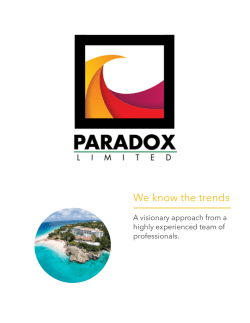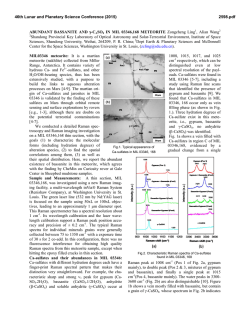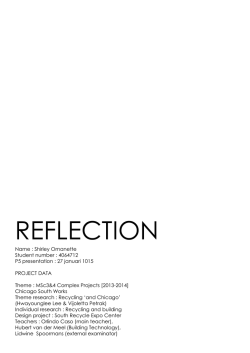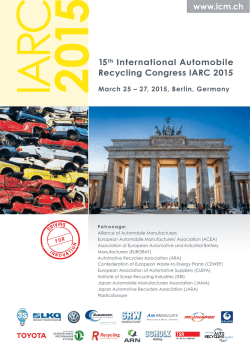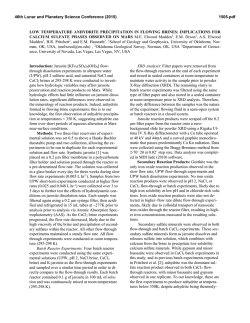
A SUSTAINABLE APPROACH
A SUSTAINABLE APPROACH 2 A SUSTAINABLE APPROACH SHAPING THE WAY PEOPLE BUILD At Siniat, we are committed to sustainable development in the company, its supply chain and its products, with the lowest possible environmental impacts and the highest standards of health and safety. Our goal is to minimise our environmental impact by optimising our processes: efficient use of energy, including energy from renewable sources, limited consumption of natural resources and use of alternative materials, reduced amounts of waste material sent to landfill, reduced water consumption, minimised factory emissions, and as much recycling as possible. We have an uncompromising approach towards health and safety, with a commitment to the personal and professional development of our employees. Promoting companywide awareness of our sustainability policies is part of this. Through partnerships with local communities, Siniat supports and partners our customers and neighbours. Our quality management system works on continuous improvement in the quality of Siniat products and services. The commitment to innovation ensures constant technical progress and a competitive edge for our business, our customers and our partners. We focus on customer satisfaction and on developing true working partnerships. At Siniat, our vision is to develop innovative and sustainable solutions that shape the way people build. Bernard LEKIEN Head of Siniat Division Left: Barnsley College (Siniat UK); Architect - Jefferson Sheard (UK); Photographer - B2B Communication (UK) Front cover: Siniat Mazan quarry still in operation - some parts which are no longer operational have since been rehabilitated to create a real area for biodiversity; Photographer - 4 Vents (FR) 3 ENVIRONMENTAL SUSTAINABILITY Reducing energy consumption and carbon dioxide emissions Continuous improvement in energy efficiency is a company priority, offering both reduced fuel costs and reduced atmospheric emissions of carbon dioxide and other greenhouse gases. Siniat believes reducing carbon dioxide emissions is a commercial and environmental imperative not just for our business but as a means to meet customers’ demands for low environmental impacts. Siniat puts a high priority on actions that will lead to lowering these emissions. Siniat’s life-cycle approach to product stewardship means its products and systems leave the lightest possible carbon footprint while providing the best solutions for ever more sustainable buildings. In 2013, Siniat launched an energy reduction project aiming at a 10% energy efficiency improvement by 2016. This equates to the average annual consumption of two of our plants. Reduced use of natural resources Siniat takes a multi-faceted approach to reducing its use of natural resources: increasing production efficiency, increasing waste recycling, reducing board weight, and – when possible – making use of Flue Gas Desulphurisation (FGD) gypsum, a power station by-product. Reduced water consumption In view of the high consumer demand for often scarce supplies of water in many parts of Europe, the construction industry is increasingly focussing on water conservation. This includes taking the amount of water used in the manufacturing of construction products into account. Fortunately, plasterboard manufacturing is not a major water consumer; nevertheless, Siniat has been working to reduce its water consumption for many years. Where possible, bearing in mind quality and manufacturing limitations, Siniat takes water from boreholes to minimise its use of treated mains water. Top: St Loubès plant (Siniat FR); Photographer - Lefèvre Patrick (FR) Left: Siniat Le Pin gypsum quarry; Photographer - Pont-Senac Jérôme Right: Ritleng gypsum recycling cie (FR); Siniat photo We ensure a return to the original appearance and biodiversity of our old quarries by shaping the groundworks and re-introducing local species 4 Siniat has been active in the recovery of plasterboard for many years, with a steady annual increase in the amount retrieved from clients’ sites for recycling. Quarry rehabilitation Leading in plasterboard recycling All Siniat’s quarrying plans include rehabilitation measures that take into account the needs and expectations of its stakeholders. Siniat aims not just to meet but to go beyond existing regulations, by designing and implementing quarrying and rehabilitation plans that minimise impacts and enable rapid restoration, or even improvement, of biodiversity in and around quarry sites. Plasterboard can be recycled many times without reducing quality. For both installers and contractors, the recovery and recycling of plasterboard waste has long been a priority. Siniat has been active in the recovery of plasterboard for many years, with a steady annual increase in the amount taken back from clients’ sites for recycling. This offers excellent resource efficiency and supports sustainable construction. Reduced transport impacts The impact of transporting raw materials and delivering finished products has always been recognised as significant. Efforts in the past largely focussed on optimising load sizes, i.e. asking our customers to maximise tonnage on trucks to be as close to the maximum loading weight as possible. This has meant that the end of the year, fewer trucks were on the road to deliver customers for the same tonnage required. For example, in France, just by increasing the loading weight on each truck by 1%, 850 trucks are not ‘on the road’ per year Since 2013, Siniat has been part of a multi-national collaboration with 16 industrial and academic partners in a 50% EU-funded project that seeks to boost closed-loop plasterboard recycling. The objective of the GTOG project (‘Gypsum to Gypsum’) is to increase gypsum-based waste recycling by up to 30%. The project’s outcomes will benefit a number of product groups and the collaboration will strengthen Siniat’s position at the forefront of plasterboard recycling. For example, our Bristol plant recycled more than 40,000t in 2013. Right: plasterboard recycling (Ritleng FR) 5 MANAGING THE PRODUCT LIFE CYCLE Lower production impacts mean higher sustainability in construction projects. Siniat takes a life-cycle approach to minimising the environmental impacts of our manufacturing and supply operations. 1. Gypsum 1. Gypsum quarrying 2. Power Station All gypsum quarries that supply Siniat must have biodiversity rehabilitation plans suitable for their gypsum-rich terrain. 2. FGD gypsum Flue Gas Desulphurisation (FGD) systems, used in power stations to eliminate sulphur dioxide emissions, produce gypsum as a by-product. It is an excellent substitute for natural gypsum and Siniat makes maximum use of this new material. In Europe, we operate several integrated FGD gypsum sites, minimising transport between producer and plant. Natur Gypsu By-product Gypsum 3. Plasterboard liner Siniat’s plasterboard liners use 100% recycled paper, mainly made from used packaging. 4. Plasterboard manufacture The manufacturing process has very few waste products, as the vast majority of water and gypsum based waste is recycled internally. The Siniat objective is to send zero gypsum waste to landfill. 4. Siniat’s plasterboard plant 5. & 6. Products Construction and Deconstruction Waste Job Site 6 At every stage, impacts are minimised through reduced use of natural raw materials and of energy, increased efficiency, and recycling. Quarry Used Packaging 5. Transport 3. Paper Mill Acknowledging the transport impacts associated with product delivery, Siniat has pioneered the use of fuel-saving ‘teardrop’ trailers in Great Britain. 6. Recycling All Siniat Plasterboards are 100% recyclable. For maximum efficiency, the gypsum and paper are divided and recycled separately. ral um 7. Design Support Siniat’s sustainability initiatives don’t stop at delivery! As well as meeting project performance needs, Siniat’s project experts provide design support for greater resource efficiency and waste minimisation. Paper 8. Environmental Product Declaration Recycled Paper Recycled Gypsum n 7. Board Recycling Plant Depending on the market, Siniat providesEPDs for its various product families. It’s not just about the environment… As part of its sustainability stewardship, Siniat partners the communities that supply our materials, manufacture our products, live near our plants or install our products and systems. 7 SOCIAL SUSTAINABILITY The only acceptable level of accidents and occupational illnesses is zero. Siniat is totally committed to causing no harm through our activities and we expect similar standards from our suppliers. We manage health and safety risks by identifying, monitoring and reducing the physical, chemical, ergonomic, biological and psychological hazards of our processes. Values and principles We value our people, both as individuals and as part of the whole company. Siniat fosters a working environment of trust, teamwork and mutual respect. Wherever we operate, Siniat adheres to a culture of respect, integrity, loyalty, collaboration and entrepreneurship. Siniat is committed to the health of construction workers and building occupants, and delivers accurate information for the safe use of its materials before, during and after construction. Legislation and social practice In our employment practices, Siniat applies a consistent code of behaviour that complies with national and international legislation and conventions, and the recommendations of the International Labour Organization. Siniat fights any kind of discrimination, whether it be on the grounds of ethnicity, gender, sexual orientation, disability or age. Siniat expects all affiliates to regularly and clearly inform personnel about the state of our business, including any potential impacts on employment conditions. This is done through on-going open communication with employees or their representatives. Left: Siniat FR installation training centre; Photographer - Michel Bost B2I 8 At Siniat, we do our best to promote responsible citizenship and have a positive impact on the development of local communities Community responsibility With our focus on local markets, Siniat encourages all affiliated companies to be involved in their communities. Employees are encouraged to offer suggestions for community service to their local management. We do our best to promote responsible citizenship and to have a positive impact on the development of local communities. Organisational effectiveness Consistent with our central business model, Siniat’s organisational culture is focused on customer orientation and performance. To improve efficiency and increase expertise, Siniat has created shared service and competency centres and implemented common Enterprise Resource Planning. Integrated talent management To develop coherent and integrated talent and performance management, Siniat has streamlined key processes, including annual performance reviews, individual development plans, an annual human resources review. Unlocking employees’ potential Siniat believes in offering our employees continuing training to support personal development and performance improvement. In addition to on the job training, communities of practice and networking, Siniat offers technical, professional and managerial training to support the development of both hard and soft skills. Training is offered at all levels: local, divisional (at the Siniat Academy), and group (via a leading international business school). Below: Siniat Customer Service Centre (FR) Customer focus Siniat has monitored customer service levels for many years, using the OTIFIC measures (On Time, delivered In Full and Invoiced Correctly) to create an overall customer service score. To create value through strong partnerships, Siniat is committed to providing an unrivalled quality of service. In addition, Siniat offers training for customers in several markets. These form a solid base for creating robust customersupplier relationships. 9 ECONOMIC SUSTAINABILITY Siniat leads in sustainable construction through the development of dry construction products that are cheaper and faster to install, safe, energy-efficient and comfortable in use, and completely recyclable. Dry construction On top of already well-known benefits (e.g. speed of installation and reduction of site waste), building comfort can be dramatically improved with dry construction. Siniat offers a large range of easily available building systems with proven efficiency. Innovation Part of Siniat’s identity is our pioneering mindset. Our mission includes bringing innovation to dry construction, adding value and creating a competitive edge for our commercial partners. This approach is at the heart of economic sustainability. Over the years, Siniat has developed new products and systems, as well as new ways to meet customers’ needs. Located in Avignon, the Siniat Technical Development Centre (TDC) is a unique asset boosting Siniat’s innovation strategy. Thermal performance Siniat has developed through-wall solutions that enable the highest thermal efficiency of building components. Dryco Systems improve building energy efficiency and help reach energy consumption reduction levels of 30 to 50% compared to regular building systems. As building regulations constantly increase thermal performance requirements, the cost of dry construction becomes increasingly competitive compared to standard construction. Siniat has designed a complete range of boards ensuring specific performances to compose our Dryco Systems. LaDura/LaPlura board provides racking performance with excellent ease of installation. Other unique examples are gypsum boards designed for external applications: Weather Defence sheathing board and Aquaboard render board reduce installation time by 30 to 50% compared to traditional boards such as wood particle. Indoor environmental quality To control the use of heating and cooling energy and to avoid condensation risks in all seasons and climates, it is critical to include air tightness in all building specifications. Siniat offers a full range of air-tight products, including building boards, membranes, and spray plasters. Siniat also offers products to improve indoor air quality: Prégyplac Air and Prégyroc Air boards absorb volatile organic components and are specially recommended for projects such as schools and hospitals. Indoor air quality is also strongly impacted by wet areas. Therefore as well as traditional moisture resistant boards, Siniat offers boards for very wet areas such as industrial kitchens, spas and swimming pool areas – WAB, LaHydro or Aquaboard. Left: Photographer - Michel Bost B2I Siniat Pregy Chrono Reno is a new internal thermal laminated system which increases speed of installation 10 Above: Néris les Bains train station (FR); Architect - Guillot/Molnar/Piccinato; Photographer - Pascal Grangier Photorama External unexposed ceiling (soffit) made with WAB board which is designed to resist very wet conditions Fire protection Seismic performance Siniat fire plasterboards are designed to comply with fire regulations by their use in internal façade layers, or in partition or ceiling systems. These systems avoid the use of additional external fire protection elements which prevent fire spreading either to surrounding buildings or inside the building, but increase loads on facades. Siniat also offers a range of plasterboards classified A1 for fire reaction and many other products to provide protection against fire. Siniat offers through-wall systems, internal partitions and ceilings designed to meet and exceed current seismic regulations. Several patents have been developed in this field in partnership with leading European universities. Deconstruction Siniat components, such as studs, accessories and boards, are not only readily assembled but also easily dismantled in the end of the building life cycle. Easy dismantling makes refurbishment much easier than in Noise protection traditional building techniques. Many Siniat components, Acoustic comfort is closely linked to sound levels coming such as metal profiles, metal accessories or gypsum from outside and inside. Siniat offers a complete range of boards are 100% recyclable. systems delivering different acoustic insulation levels, for use in facades, partitions and ceilings. Acoustic comfort also concerns sound reverberation. The Siniat perforated board range includes different patterns designed to control reverberation and to improve building appearance. Below: Putney Upper Lawn, London (Siniat UK); Architect - Casson Conder Partnership (UK); Photographer - Matt Chisnall (UK) Residential building made with Siniat Weather Defence: external sheathing board easy to install providing moisture and fire resistance 11 Siniat International 500 Rue Marcel Demonque - Zone Agroparc CS 70088 - 84915 Avignon Cedex 9 France www.siniat.com ©Siniat 2014 FR_0614
© Copyright 2024
